
ACS Bio & Med Chem Au
Scope & Guideline
Advancing the frontiers of biochemistry and medicinal chemistry.
Introduction
Aims and Scopes
- Biological Chemistry and Drug Design:
The journal emphasizes the design and synthesis of biologically active compounds, including small molecules and peptides, aimed at therapeutic applications. - Catalysis and Mechanistic Studies:
Research on catalytic mechanisms and the role of enzymes in biological processes is a core theme, including investigations into RNase families and protease inhibitors. - Biotechnology and Bioengineering:
The journal publishes studies on biotechnological applications, such as the development of bioproduction platforms and functionalized biomaterials for medical use. - Structural Biology and Imaging Techniques:
Studies utilizing advanced imaging techniques and structural biology to elucidate the interactions of biomolecules and their mechanisms of action are prominently featured. - Nanotechnology and Biomaterials:
Research on the development of nanocarriers and materials for drug delivery, as well as the exploration of their biological interactions, is a significant focus area. - Bioinformatics and Computational Chemistry:
The integration of computational methods to understand biological processes and predict the interactions of compounds with biological targets is a growing area of interest.
Trending and Emerging
- Targeted Protein Degradation:
Research on targeted protein degradation techniques, such as the use of heterobifunctional degraders, is on the rise, reflecting a growing interest in innovative therapeutic strategies. - Synthetic Biology and Bioconjugation:
There is an increasing trend in studies involving synthetic biology approaches, particularly in the design and engineering of peptide ligands and bioconjugates for therapeutic applications. - Immunotherapy and Antibody Development:
The journal has seen a surge in papers focused on immunotherapeutic strategies, including the development of antibody-based therapies and their mechanisms of action. - Antiviral Agents and COVID-19 Research:
In light of the recent pandemic, there is a notable increase in research related to antiviral agents and their mechanisms, particularly studies aimed at combating SARS-CoV-2. - Nanomedicine and Drug Delivery Systems:
Emerging themes in nanomedicine, particularly regarding the development of nanocarriers for drug delivery and their interactions in biological systems, are increasingly prevalent.
Declining or Waning
- Traditional Antibiotics and Resistance Mechanisms:
Research focused on traditional antibiotics and their mechanisms of action appears to be waning, possibly due to the shift towards exploring novel antimicrobial strategies and resistance mechanisms. - Basic Biochemical Pathways:
There has been a noticeable decline in publications centered on fundamental biochemical pathways, as the journal shifts towards more applied research with immediate clinical implications. - Natural Products Chemistry:
The exploration of natural products as a source of therapeutic agents seems to be less frequent, possibly overshadowed by synthetic and engineered compounds with targeted actions. - General Reviews on Established Topics:
The publication of broad review articles on well-established topics is decreasing, indicating a preference for more specialized and cutting-edge reviews that focus on emerging areas.
Similar Journals
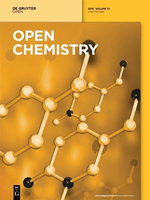
Open Chemistry
Catalyzing Progress in Chemistry and Materials ScienceOpen Chemistry, published by DE GRUYTER POLAND SP Z O O, is a distinguished peer-reviewed journal that has been serving the global chemistry community since its inception. With an ISSN of 2391-5420 and an E-ISSN also of 2391-5420, this open-access journal has been accessible to researchers and practitioners alike since 2015, ensuring a wide dissemination of high-quality research findings. Located in Germany, specifically at BOGUMILA ZUGA 32A STR, 01-811 WARSAW, MAZOVIA, POLAND, Open Chemistry aims to publish innovative research across various chemical disciplines, with special attention to miscellaneous chemistry and materials chemistry. It is currently ranked in the Q3 category for both fields as of 2023, reflecting its solid standing within the academic community, with specific ranks of 187/408 in General Chemistry and 153/317 in Materials Chemistry, corresponding to respective percentiles of 54 and 51. Open Chemistry not only enhances the accessibility of cutting-edge research but also serves as a vital resource for students, professionals, and scholars seeking to advance their knowledge in the rapidly evolving landscape of chemical sciences.
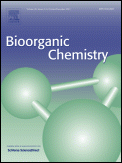
BIOORGANIC CHEMISTRY
Elevating research standards in biochemistry and organic chemistry.BIOORGANIC CHEMISTRY, published by Academic Press Inc., a prestigious imprint of Elsevier Science, represents a cornerstone in the fields of biochemistry, organic chemistry, and drug discovery. With an impressive Scopus rank placing it in the top quartiles across critical categories—including Q2 for Biochemistry and Drug Discovery, and Q1 for Organic Chemistry—this journal has established itself as a vital resource for researchers, professionals, and students alike. Featuring a diverse array of articles that explore innovative methodologies and emerging trends from 1971 to the present, BIOORGANIC CHEMISTRY effectively bridges the gap between laboratory research and practical applications. Although not an Open Access journal, its rigorous peer-review process ensures the delivery of high-quality, impactful research that drives advances in the understanding and application of biochemistry. With an aim to facilitate scientific discourse and collaboration, it invites contributions that further the exploration of chemical processes within biological systems.
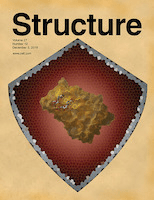
STRUCTURE
Connecting research and innovation in structural biology.STRUCTURE is a premier academic journal published by CELL PRESS, dedicated to advancing the field of structural biology and molecular biology since its inception in 1993. With an impressive reputation, it is recognized as a Q1 journal in both Molecular Biology and Structural Biology categories, reflecting its high impact within the academic community. The journal holds a significant position in Scopus rankings, placing 10th among 49 in Structural Biology and 100th among 410 in Molecular Biology, marking it as a key resource with a strong influence on ongoing research. Researchers and professionals alike will find STRUCTURE an invaluable platform for disseminating cutting-edge findings related to protein structure, dynamics, and interactions, fostering insights that can lead to groundbreaking applications in medicine and biotechnology. Although the journal follows a traditional subscription model, it continues to attract a diverse array of submissions, ensuring a vibrant exchange of knowledge in the ever-evolving landscape of structural and molecular biology. Access to its content can enhance the understanding of intricate biological mechanisms, making it essential reading for experts, students, and anyone passionate about the molecular underpinnings of life.

CURRENT MEDICINAL CHEMISTRY
Shaping Tomorrow’s Medicines Through Rigorous Research.Current Medicinal Chemistry is a leading journal published by Bentham Science Publishers Ltd, known for its rigorous focus on the multifaceted realm of medicinal chemistry. With an ISSN of 0929-8673 and E-ISSN 1875-533X, the journal plays a crucial role in disseminating high-quality research findings that bridge the gap between chemistry and health sciences. Operating from Sharjah, United Arab Emirates, it has been a prominent scholarly resource since its inception in 1994, and is expected to continue until 2024. Current Medicinal Chemistry has earned its place in the academic community with an impressive impact factor and categorization in Q1 and Q2 quartiles across various disciplines, including Organic Chemistry, Biochemistry, Drug Discovery, and Pharmacology, highlighting its substantial contribution to these fields. Notably, it ranks 24th in Organic Chemistry and is within the 88th percentile, underscoring its appeal to researchers, professionals, and students alike who are keen on exploring cutting-edge advancements in drug design and development. Although it is not an open-access journal, it provides vital content that informs and inspires innovation in medicinal chemistry, appealing to a global audience committed to enhancing human health through scientific discovery.
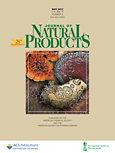
JOURNAL OF NATURAL PRODUCTS
Unlocking Nature's Secrets for Scientific InnovationJOURNAL OF NATURAL PRODUCTS, published by the American Chemical Society, is a premier academic journal that focuses on the study and application of natural products in various scientific domains. With an esteemed ISSN of 0163-3864 and an E-ISSN of 1520-6025, this journal caters to a wide range of fields, including Analytical Chemistry, Complementary and Alternative Medicine, Drug Discovery, Molecular Medicine, Organic Chemistry, Pharmaceutical Science, and Pharmacology. The journal consistently ranks in the Q1 and Q2 quartiles across these categories, reflecting its significant contribution and rigorous standards in the scientific community. Notably, its Scopus rankings highlight its influence, with notable percentiles across various fields, including a 93rd percentile in Complementary and Alternative Medicine. The JOURNAL OF NATURAL PRODUCTS aims to advance knowledge in the field by publishing groundbreaking research articles, reviews, and critical insights, making it an essential resource for researchers, professionals, and students dedicated to exploring the vast potential of natural substances. This journal addresses complex challenges and fosters innovative developments, further establishing its place as a cornerstone in natural products research. Access to published articles may vary, underscoring the need for individuals in this field to stay connected with the latest advances through the journal's offerings.

MONATSHEFTE FUR CHEMIE
Exploring Chemistry's Rich Legacy and Future InnovationsMONATSHEFTE FUR CHEMIE, an esteemed journal published by Springer Wien, has been a significant contributor to the field of chemistry since its inception in the late 19th century. With a rich history spanning from 1880 to the present, this journal provides a platform for innovative research and comprehensive reviews in various areas of general chemistry. Although it currently holds a Q3 ranking in the miscellaneous category of chemistry, its commitment to maintaining high academic standards is reflected in its continued relevance and citation impact, as evidenced by its Scopus ranking. Researchers, professionals, and students engaged in chemical sciences will find this journal a valuable resource for advancing their knowledge and contributing to ongoing discussions in the field. For those looking to stay updated on the latest developments in chemistry while engaging with a storied publication, MONATSHEFTE FUR CHEMIE is a pivotal source of insightful content.

MOLECULES
Advancing Chemistry Through Open Access InnovationMOLECULES, published by MDPI, stands as a prominent open-access journal dedicated to the field of chemistry, with an exceptional reputation in various sub-disciplines. Since its inception in 1997, this journal has committed itself to the dissemination of innovative research, spanning topics in Analytical Chemistry, Organic Chemistry, Pharmaceutical Science, and Drug Discovery. With impressive rankings across Scopus categories—including a coveted Q1 designation in both Analytical Chemistry and Pharmaceutical Science—MOLECULES is recognized as a vital resource for researchers, professionals, and students aiming to stay at the forefront of scientific development. The journal’s data reflect its wide-ranging influence, holding high percentiles in multiple chemistry categories, thereby ensuring that its articles reach a significant audience. As an open-access journal, it provides unparalleled access to its content, available freely and globally, which promotes further advancement and collaboration within the scientific community. Its ongoing commitment to high-quality research from 1996 to 2024 reinforces its status as a leader in the academic publishing landscape.
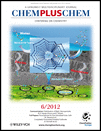
ChemPlusChem
Fostering Scientific Dialogue for a Brighter Chemical FutureChemPlusChem is a premier journal published by WILEY-V C H VERLAG GMBH, dedicated to the vibrant field of chemistry. With an ISSN of 2192-6506 and an impressive Q1 ranking in Scopus's 2023 category for miscellaneous chemistry, this journal serves as a significant platform for the dissemination of high-quality research and innovative findings. Since its inception in 2012, ChemPlusChem has fostered interdisciplinary collaborations, encapsulating a wide array of topics within chemistry that facilitate scientific advancement and education. The journal features a robust open access system, enabling extensive visibility for authors while providing easy-to-access resources for researchers, professionals, and students globally. Located in Weinheim, Germany, ChemPlusChem reflects international standards and ambitions, striving to enrich the global scientific community through rigorous research and engaging scientific discourse.

JACS Au
Fostering collaboration through transformative scientific dialogue.JACS Au, published by the American Chemical Society, is a premier open access journal dedicated to advancing research in the rapidly evolving fields of analytical chemistry, organic chemistry, and theoretical chemistry. Since its inception in 2021, JACS Au has quickly established itself as a leading platform for high-quality research, reflected in its Q1 rankings across multiple categories for 2023, including Organic Chemistry and Analytical Chemistry. The journal focuses on innovative methodologies and applications that drive the discipline forward, making it an essential resource for researchers, professionals, and students alike. With an impressive Scopus ranking, consistently placing in the top tiers of its categories, and offering a broad range of access options for its readership, JACS Au aims to foster collaboration and disseminate transformative ideas that impact the global scientific community. Exploring diverse topics within chemistry, this journal provides a vital conduit for sharing groundbreaking research and enhancing scientific dialogue.
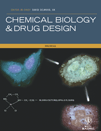
Chemical Biology & Drug Design
Bridging theory and practice in chemical biology and pharmacology.Chemical Biology & Drug Design, an esteemed publication by WILEY, serves as a vital platform for the dissemination of pioneering research in the interdisciplinary fields of biochemistry, drug discovery, molecular medicine, organic chemistry, and pharmacology. With a dedicated commitment to advancing the understanding of chemical interactions and drug development, this journal not only fosters innovation but also bridges the gap between theoretical research and practical applications. It boasts an impressive impact factor and is recognized in the 2023 category quartiles as Q3 in Biochemistry and Molecular Medicine, and Q2 in Drug Discovery, Organic Chemistry, and Pharmacology, indicating its relevance and influence in these crucial areas. The journal’s rankings across various Scopus categories further solidify its position as a reputable resource for researchers, professionals, and students striving to stay at the forefront of medicinal chemistry and drug design. While primarily traditional access-based, the journal's evolving scope from 2006 to 2024 ensures an ongoing contribution to essential scientific dialogue, making it an indispensable read for those committed to advancing health sciences.